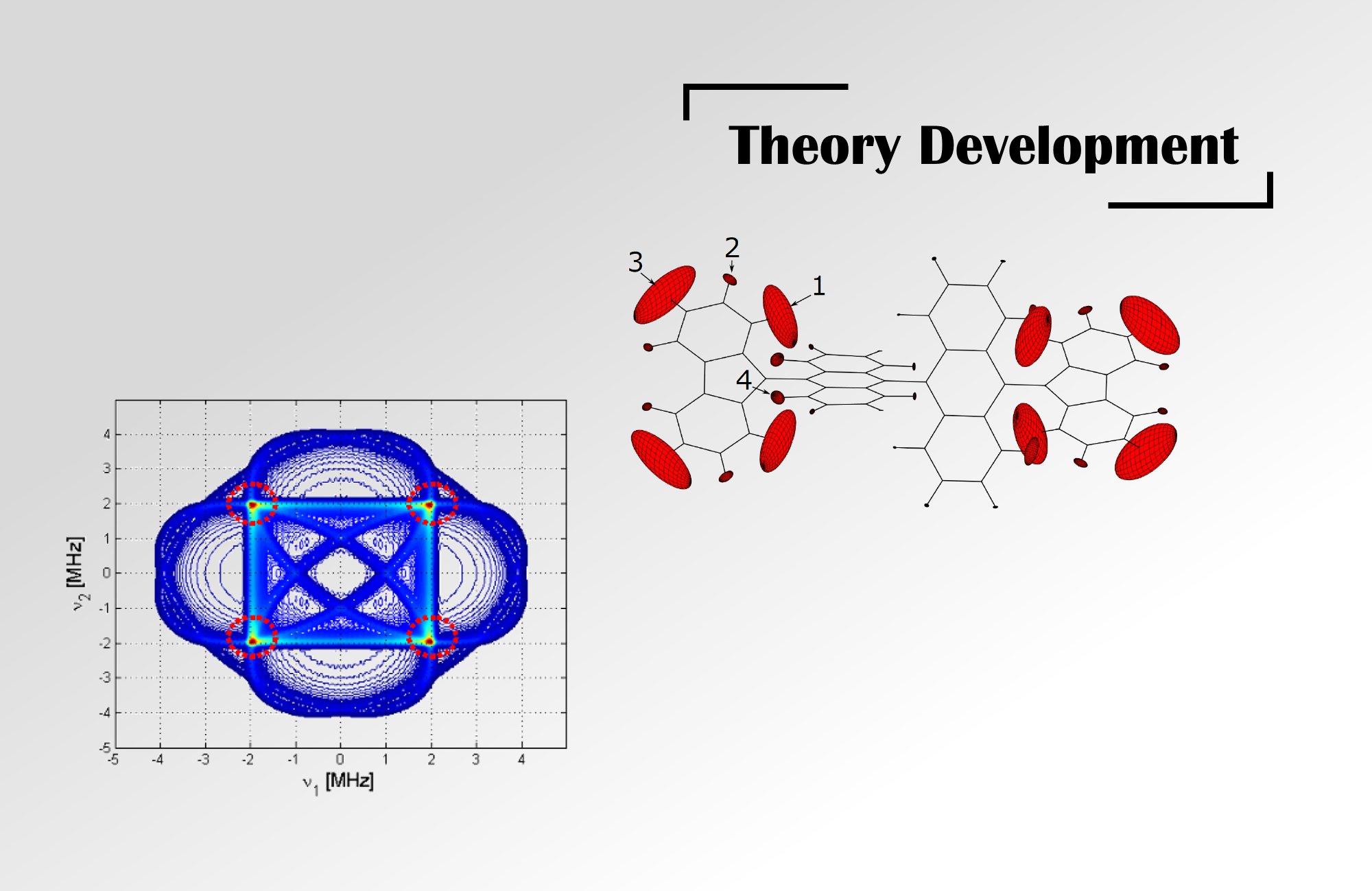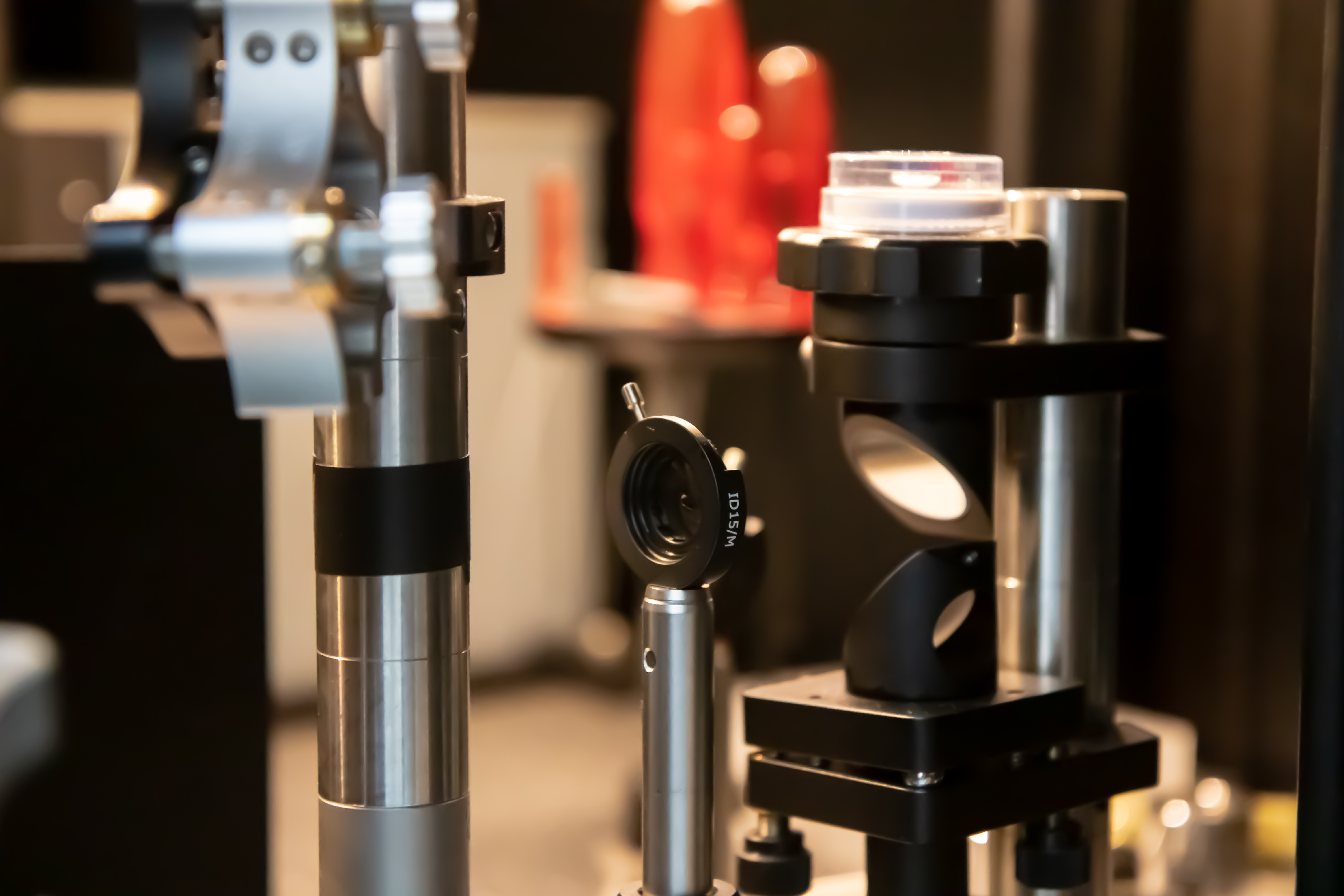
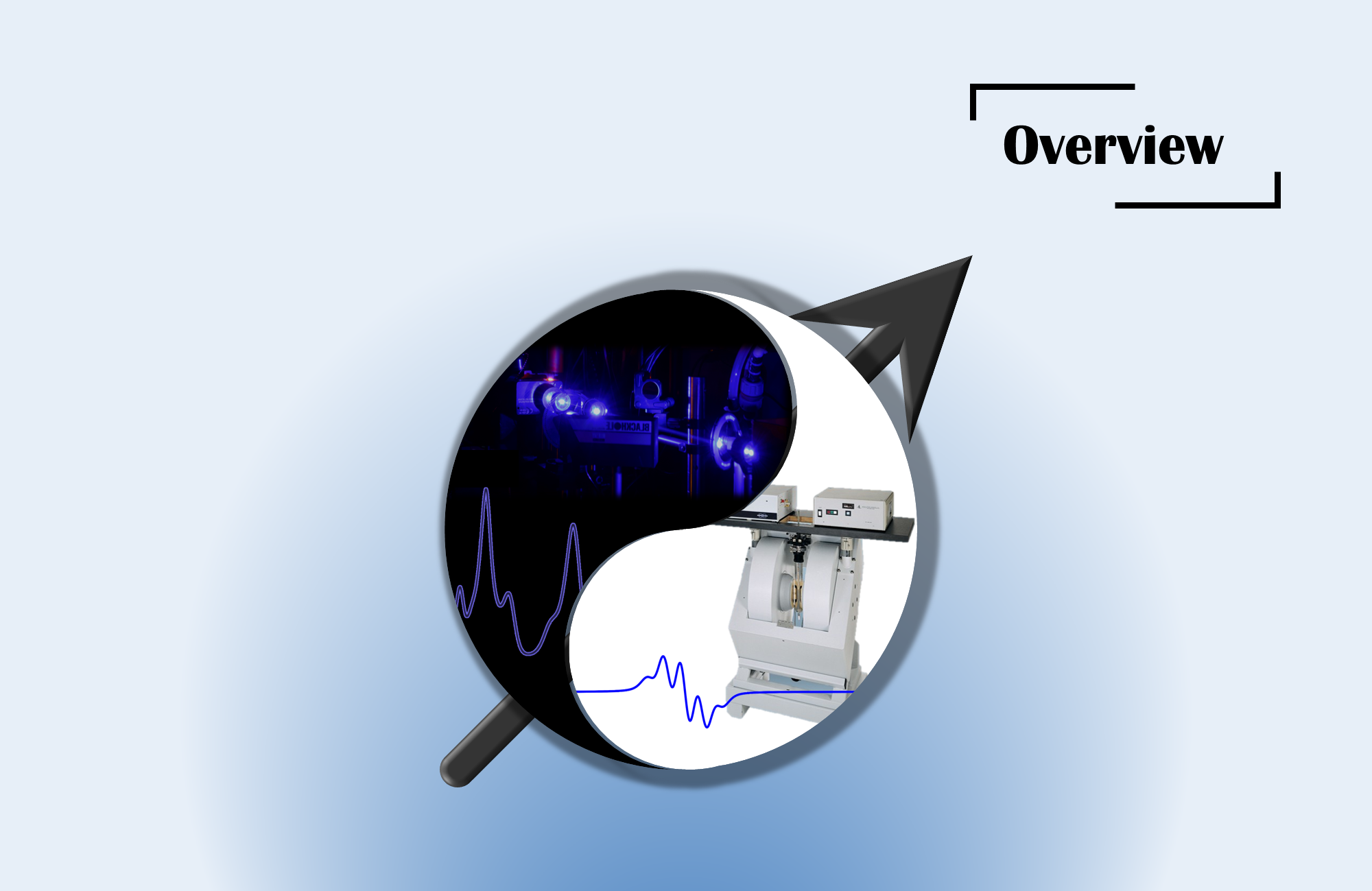
The fact that fields as weak as that of the Earth can affect the yield and kinetics of certain chemical reactions has long fascinated scientists and the public alike. We study the effects of magnetic fields on systems as diverse as bird proteins, singlet fission materials and models of low field compasses.
Unpaired electron spins, as studied by Electron Paramagnetic (or Spin) Resonance (EPR/ESR) not only serve as convenient "spies" to report on structure and dynamics of chemical and biological structures, but also allow the investigation of doublet and triplet spin delocalisation in supramolecular structures, a particular forte of our group.
The vast majority of our ESR and all Field Effect studies rely on highly polarised, ie, non-Boltzmann state spin systems, created by coherent laser excitation. Much of our work is therefore supported by or indeed entirely reliant upon Optical Spectroscopy which we exploit, develop and enjoy lively collaboration with the Mackenzie group on.
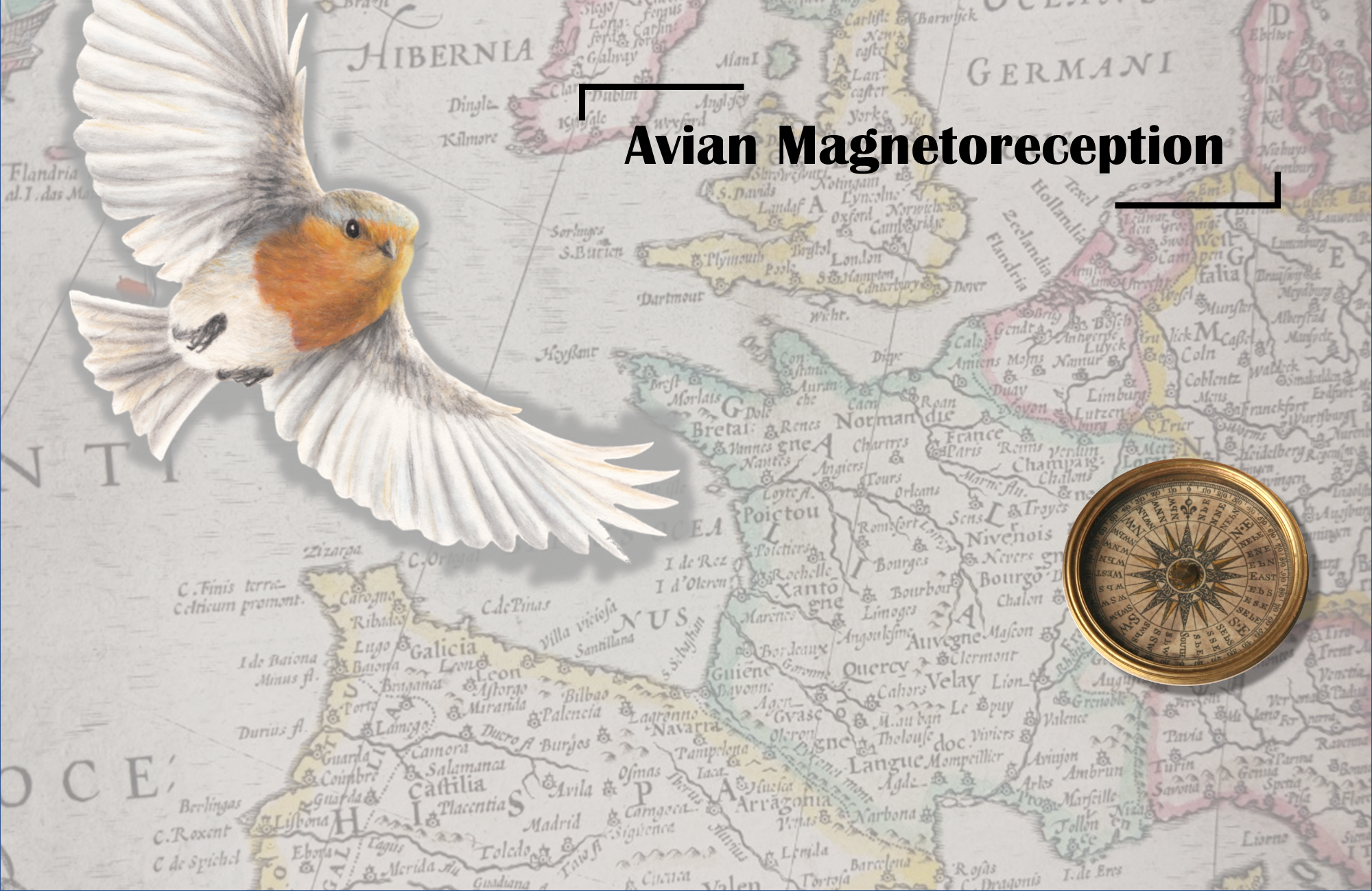
Night migratory song birds are of masters of using, amongst other senses, the magnetic compass to complete the amazing feat of navigating hundreds, if not thousands, of miles every year to navigate to warmer climates during the winter only to return to their nesting grounds in the spring to raise their young.
In our group we study the quantum mechanical origin of this phenomenon – the so-called Radical Pair Mechanism - inside a protein called the Cryptochrome by optical spectroscopy and EPR.
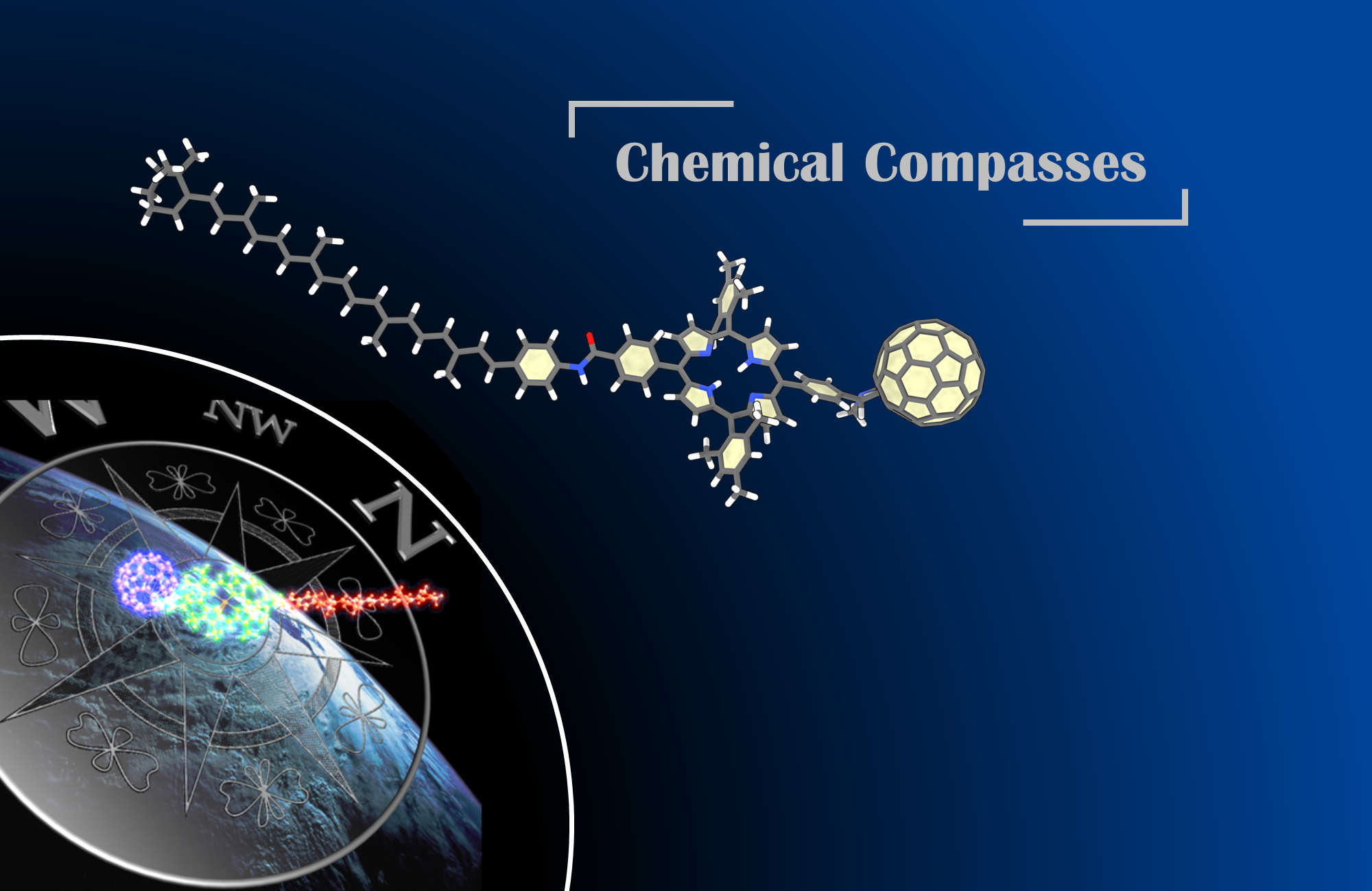
Magnetic Field Effects generally arise when spin states are created in under conservation of total spin angular momentum in states of high spin polarisation such as the radical pairs playing a role in the avian magnetoreception hypothesis. Another prominent example regards the singlet fission process resulting in two spin correlated triplet states generated from a singlet molecular precursor. In analogy to radical pair reactions, the recombination of these triplet states has been shown to be sensitive to applied static magnetic fields. In our lab we exploit the sensitivity of both processes not only magnetic field strength but also the direction of the magnetic field, creating so-called chemical compass systems.
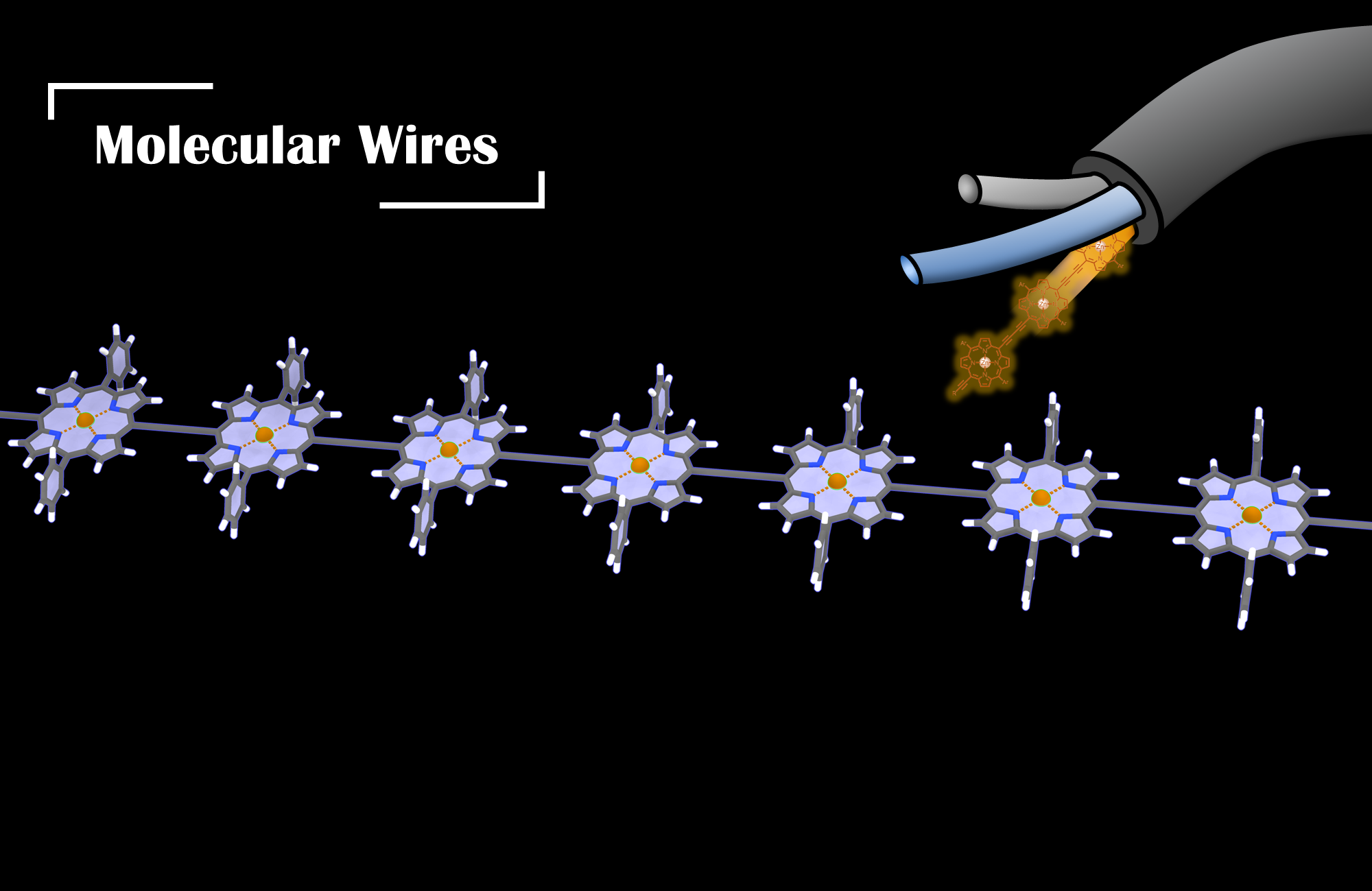
Long π-conjugated oligomers, or molecular wires, are widely investigated because of their ability to mediate electron transfer, and because of their strong nonlinear optical behaviour.
Our group, in collaboration with Prof HL Anderson, has been investigating these supramolecular structures in both the ionic forms (so-called doublet states) and photo-generated, spin polarised triplet states by Electron Spin Resonance. Furthermore, we make use of paramagnetic central metals in cyclic architectures of these structures to investigate phenomena such as quantum interference.
